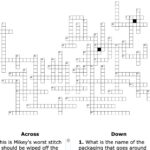This guide demystifies 4×4 OLL parity, a common stumbling block for cubers tackling the 4×4 Rubik’s Cube. Learn how to identify, understand, and ultimately conquer this unique puzzle within a puzzle!
Understanding 4×4 OLL Parity
What is OLL Parity?
4×4 OLL (Orientation of the Last Layer) parity is a state exclusive to 4×4 cubes (and larger even-layered puzzles) where two adjacent edges on the last layer appear flipped, preventing completion even when the colors seem correct. This isn’t a defect, but a consequence of the 4×4’s inner layer rotations. Think of it like an invisible gear shifting, adding a layer of complexity not found on standard 3×3 cubes. Unlike a 3×3, a 4×4 has inner layers and edge pieces that can swap places in unexpected ways, often during OLL, regardless of your solving method.
Spotting the Parity Problem
Identifying OLL parity is straightforward. After pairing your last layer edges, look for two adjacent edges that require flipping. These two side-by-side rebels are your parity culprits. This distinct visual cue sets it apart from other last-layer scrambles. You might encounter an odd number of flipped edges, or an edge arrangement impossible on a standard 3×3 cube. These “impossible” configurations arise from the independent rotation of the inner layers, measured by the Quarter Turn Metric (QTM).
Conquering Parity: Algorithms and Techniques
Parity-Busting Algorithms
Algorithms—specific sequences of moves—are your key to resolving OLL parity. Here are a couple of popular options:
- Algorithm 1 (Inner Slice Notation):
Rw U2 x Rw U2 Rw U2 Rw' U2 Lw U2 Rw' U2 Rw U2 Rw' U2 Rw' - Algorithm 2 (Outer Block Notation):
r U2 x r U2 r U2 r' U2 l U2 r' U2 r U2 r' U2 r'
(Remember, Rw/Lw involve turning the wide right/left layers—both inner and outer—as one. r/l only turn the outer right/left layers. x rotates the entire cube along the R face.)
| Algorithm | Notation | Moves | Perceived Difficulty |
|---|---|---|---|
| Algorithm 1 | Inner Slice | 33 | Medium |
| Algorithm 2 | Outer Block | 33 | Medium |
Don’t just memorize these; understand them. Visualize how each move affects the cube. Practice is key. Experiment to find the algorithm that best suits your turning style.
Choosing the Right Algorithm
The “best” algorithm is subjective. Some cubers find inner slice turns (Rw, Lw) more comfortable, while others prefer outer block turns (r, l). Experiment and discover your preference.
Beyond Algorithms: Advanced Strategies
While algorithms are essential, some solvers believe it may be possible to anticipate parity earlier in the solve, integrating the solution seamlessly. This “parity prediction” is a topic of ongoing discussion and research within the speedcubing community. It’s a complex area, and whether such prediction is consistently achievable is still debated. Learning more about QTM might contribute to this area of research.
OLL vs. PLL Parity
OLL parity focuses on orientation—those flipped edges. Its cousin, PLL (Permutation of the Last Layer) parity, deals with permutation—ensuring pieces are in the correct positions once oriented. They’re related but distinct challenges. Some research suggests there may be potential to develop combined solutions.
Why Does OLL Parity Occur? The Invisible 2x2x2 Core
The secret to understanding OLL parity lies within the 4×4’s internal structure. Imagine an invisible 2x2x2 cube at its core. Certain moves, particularly those involving the inner slices (like Rw or ‘r’), manipulate this core, causing unseen edge swaps. It’s these hidden swaps that manifest as OLL parity. It’s like shuffling cards face down—you only see the result after the shuffle. The 3×3, lacking this inner mechanism, doesn’t experience OLL parity.
Recognizing OLL Parity: Visual Cues and Quick Identification
Spotting OLL parity quickly is crucial for efficient solves. The key is recognizing visual cues that indicate an “impossible” 3×3 state. Look for one or three incorrectly oriented edges in the last layer. This is your clear signal. Two incorrect edges, however, are typical of regular OLL cases and don’t indicate parity.
Integrating Parity into Your Solving Strategy
The parity algorithm isn’t a standalone solution; it’s a tool within your overall 4×4 method. Apply it after solving the first two layers and before completing OLL and PLL. This ensures you’re addressing the parity issue at the optimal stage.
Is your home plagued by the incessant chirping of a wired smoke alarm beeping? Unravel the mystery behind the incessant beeps and restore peace and quiet with our comprehensive guide. Looking for information on 267084131? Delve into the details and discover what lies beneath this enigmatic number.
By mastering the principles and techniques outlined in this guide, you can transform OLL parity from a frustrating roadblock into a manageable step in your 4×4 journey. Conquer parity and watch your cubing skills soar!
- Crypto Quotes’ Red Flags: Avoid Costly Mistakes - June 30, 2025
- Unlock Inspirational Crypto Quotes: Future Predictions - June 30, 2025
- Famous Bitcoin Quotes: A Deep Dive into Crypto’s History - June 30, 2025
















